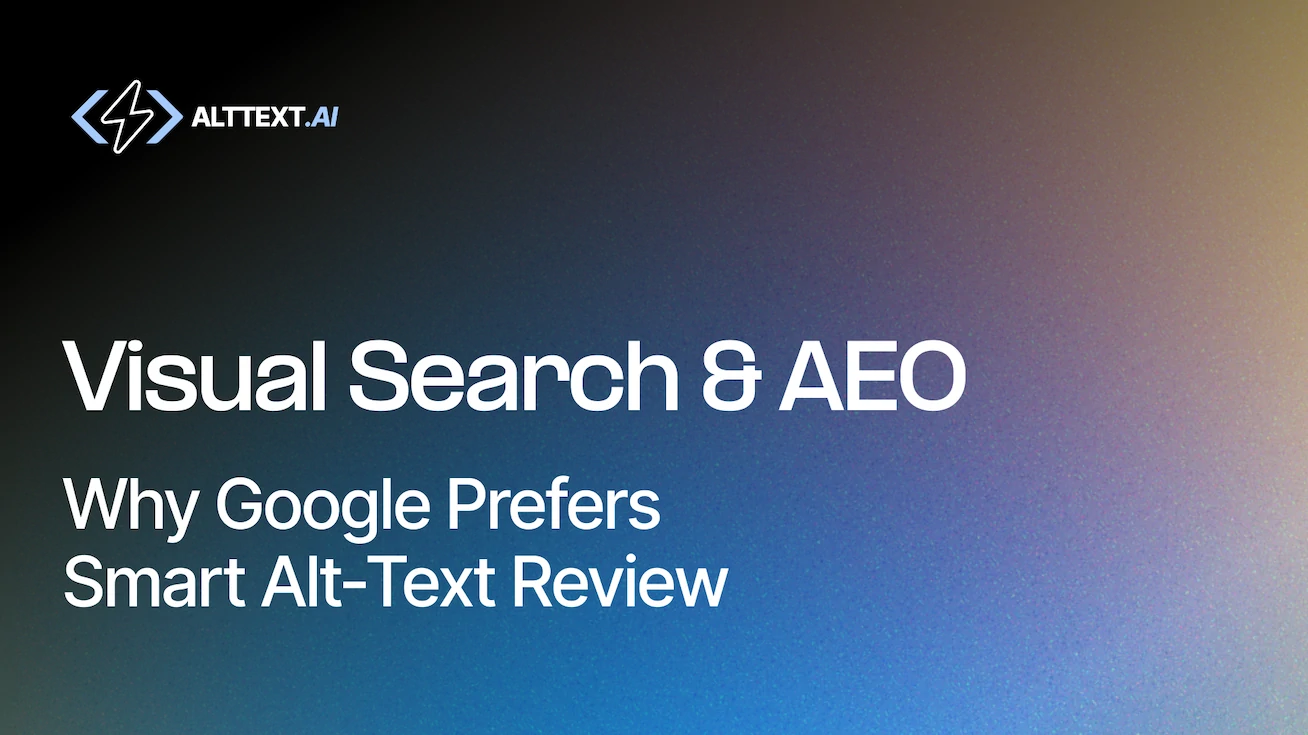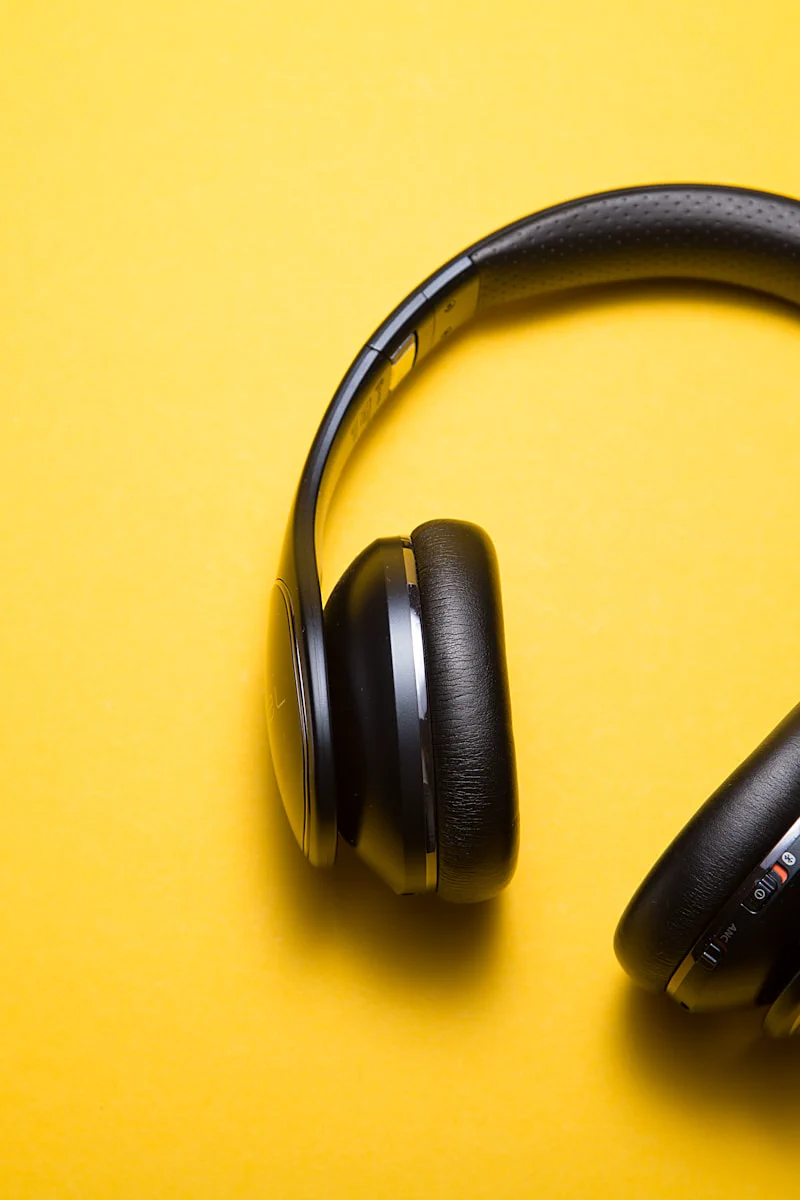
Visual Search & AEO: Why Google Prefers Smart Alt-Text
How smart alt-text helps you win in the new era of AI-powered discovery
Search is changing fast. Visual search is becoming default behavior, and answer engines are reading your pages like a person—across text, images, and structure.
When was the last time you actually typed "What's this plant?" or "Where can I buy this shirt?" Most people just point their camera and get instant answers. Visual search is becoming the default, not the exception.
Google Lens now handles over 20 billion visual searches per month (source), and answer engines like Perplexity and Google's SGE increasingly summarize content directly. Your old SEO tactics? They're not broken, but they're incomplete.
Old SEO tactics aren't dead, just incomplete. One lever most teams overlook? Smart alt text that explains what an image means in context.
What are visual search and AEO?
Visual search
Users search with images instead of keywords (e.g., Google Lens, Pinterest Lens, Amazon StyleSnap).
Popular Visual Search Tools
Point your camera and get instant answers
12 billion searches/month
Google Lens volume and growing
AEO (Answer Engine Optimization)
Optimizing content so AI systems can extract direct answers using multimodal context (text, images, schema).
Answer Engine Examples
AI that answers questions directly instead of showing links
Zero-click answers
Content needs to be machine-readable
Google's multimodal AI now connects dots between your images, text, and user intent. It's reading your entire page like a human would, understanding context across all content elements.
Understand Your Current Visual Search Opportunity
Now that you understand visual search and AEO, run a free Website Accessibility Analyzer to see how many of your images are missing the smart alt text needed to win in this new landscape.
How smart alt-text supports visual search and AEO
Alt-text is no longer just about screen readers or basic SEO. It now plays a central role in helping machines understand images within a page's context.
Why smart alt-text matters:
- Helps AI interpret the meaning behind an image (not just the pixels)
- Supplies Google with additional semantic signals for the page
- Gets your content featured in those visual search results that are taking over Google
- Provides context for zero-click answers and AI summaries
What Makes Alt-Text "Smart" in 2025?
Not All Alt-Text Is Equal
Basic (useless):
photo1.jpg
Bad (generic):
Image of a man smiling
Smart (helpful):
Professional at adjustable standing desk in modern home office
What Makes Alt-Text Smart?
Natural Language
Reads like human speech, not keywords
Contextual Purpose
Matches the image's role on the page
Strategic Intent
Supports overall page SEO goals
Quality Focused
Avoids repetition and keyword stuffing
Google's perspective
With image-first search becoming mainstream, this is no longer optional.
Alt-text + multimodal AI: the future of indexing
Search engines are moving from parsing HTML to parsing meaning.
Thanks to technologies like Google's MUM (Multitask Unified Model), multimodal AI understands:
- What's in your image
- The context of the surrounding content
- How it answers a user's intent
Treat alt text as part of a system: title, headings, body copy, schema, internal links—all aligned to the same intent.
5 alt-text optimization tips for visual search & AEO
1. Describe the purpose, not just the picture
Bad:
red shoes
Good:
Nike Zoom Pegasus 40 running shoes with React foam for marathon training
Think about what terms your audience would actually use to describe the image out loud.
2. Match alt-text tone to your page topic
Educational Page
"Step-by-step form guide for safe deadlift technique"
Product Page
"Adjustable office chair featuring built-in lumbar support"
Match your voice. If your page is conversational, your alt text should be too.
3. Don't repeat captions or titles
Google sees redundancy as a sign of low-quality content and may devalue pages with repetitive text signals.
Each text element should provide unique value. If your caption says "Product showcase," your alt-text should describe what's actually being showcased.
4. Include contextually relevant keywords
Natural Integration
Keywords should fit naturally into descriptive language, not feel forced or stuffed.
Pro tip: Think about what terms your target audience would actually use to describe the image.
5. Use AI-generated alt-text carefully
Set Guardrails
- • Length limits (125 characters max)
- • Tone consistency with your brand
- • Confidence thresholds for accuracy
- • Review workflows for quality control
AltText.ai advantage: Built-in quality controls, brand tone customization, and bulk processing with human oversight options.
"After aligning alt text to page intent, Google Images clicks rose 42% over 8 weeks."
Jason C.
Head of SEO (retailer)
Before & After: Smart Alt-Text Examples
See how smart alt-text transforms basic descriptions into contextual, SEO-ready content that serves both accessibility and visual search.

"headphones.jpg"
"Wireless noise-canceling headphones for focused work and music listening"

"analytics dashboard"
"Marketing dashboard showing traffic, engagement, and conversion trends"
Why This Works
See the difference? The better alt text tells you why someone would care about these images. When Google's AI reads this, it understands not just what's in the picture, but what problem it solves—exactly what people are searching for.
Smart alt-text is your competitive advantage
Visual search and answer engines are reading your pages like humans—across text, images, and structure. Smart alt text that explains context wins.
Visual Discovery
Get found in image searches
AI Summaries
Power answer engines
Higher Rankings
Beyond text-only SEO
Start with your top 10 revenue pages. Align alt text to the page's primary query and image purpose, then expand. Most teams see movement in weeks.